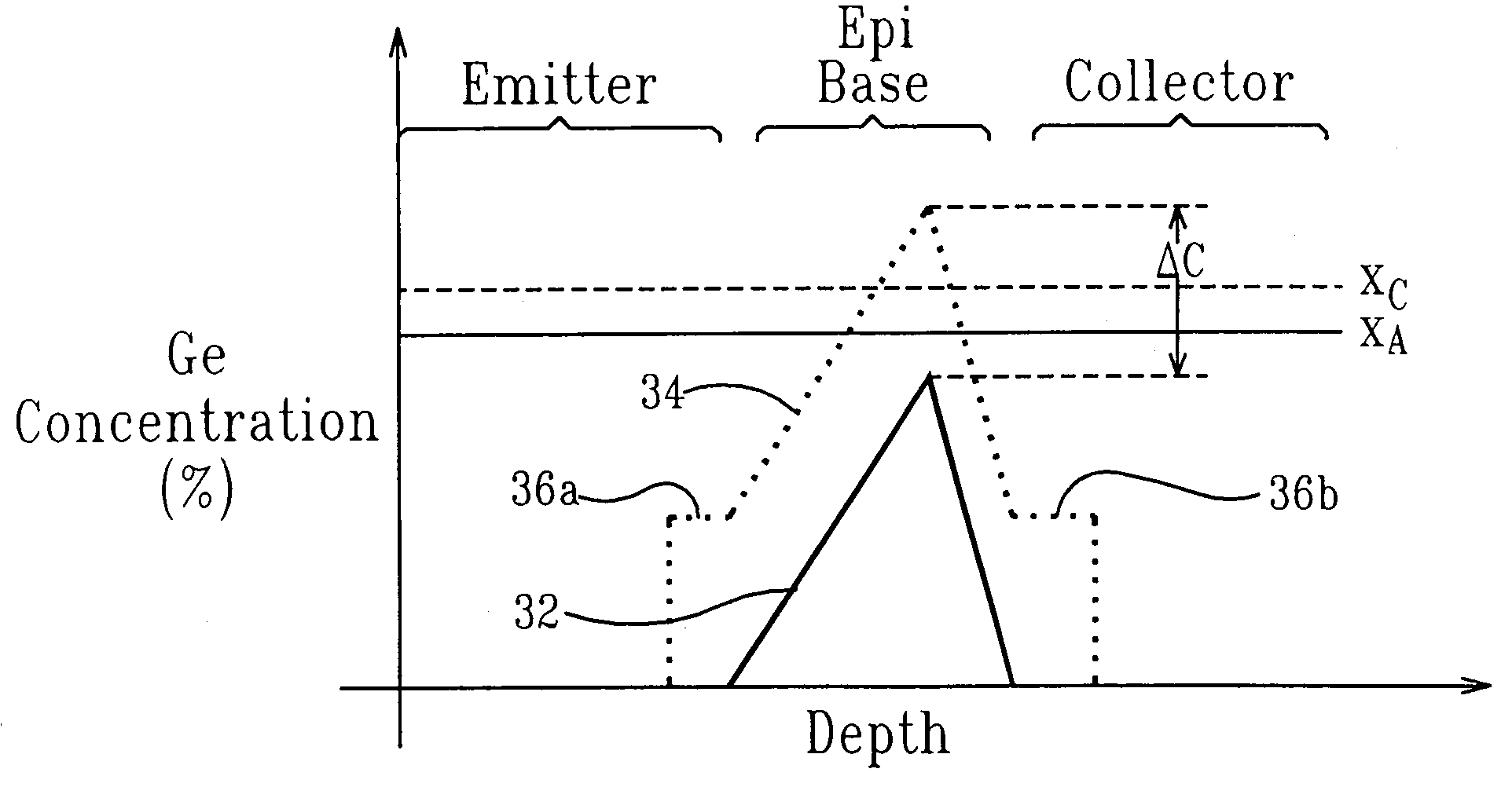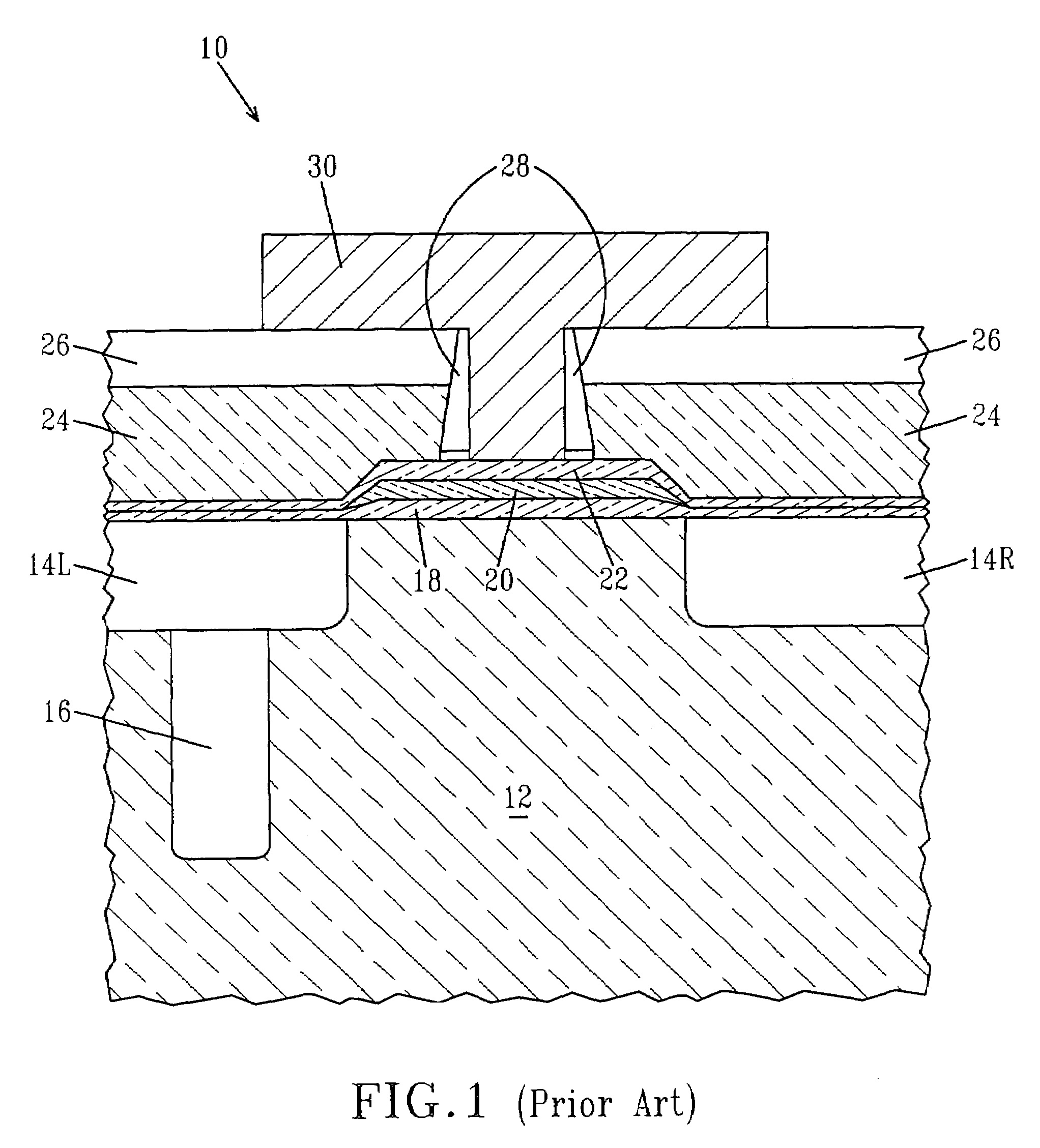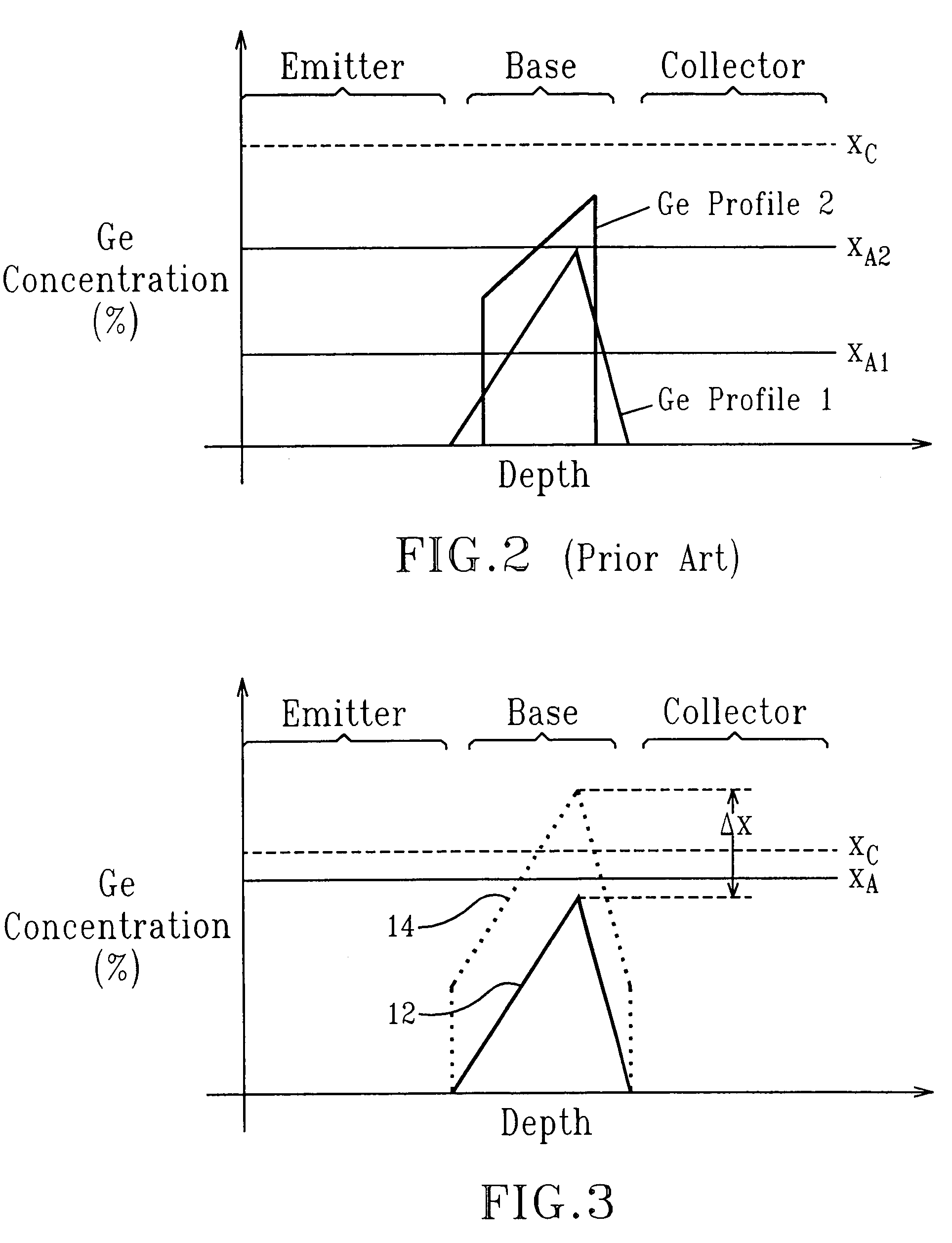Mobility enhancement in SiGe heterojunction bipolar transistors
a bipolar transistor and heterojunction technology, applied in the field of mobility enhancement of sige-based heterojunction bipolar transistors, can solve the problems increasing the carrier scattering, carrier trapping, and carrier recombination, and no longer contain elastic energy stored in the distorted sige crystal structure. , to achieve the effect of increasing the biaxial strain in the base region, improving the performance of currently available sige-based hbt devices,
- Summary
- Abstract
- Description
- Claims
- Application Information
AI Technical Summary
Benefits of technology
Problems solved by technology
Method used
Image
Examples
Embodiment Construction
[0039]A typical SiGe-based HBT having a deep trench isolation and a T-shaped emitter is shown in FIG. 1 (hereinafter FIG. 1). Specifically, FIG. 1 includes a semiconductor structure 10 that includes at least a collector 12 that is positioned between two shallow trench isolations regions 14R and 14L. The shallow trench isolation region on the left hand side of the drawing, represented by 14L, has a deep trench 16 extending from a bottom walled surface of the shallow trench. The semiconductor structure shown in FIG. 1 also includes a first epitaxial silicon layer 18, a SiGe base 20, and a second epitaxial silicon layer 22, which are located atop the trench isolation regions and the collector 12. The structure shown in FIG. 1 also includes an extrinsic base 24 and an oxide layer 26 which are patterned to expose a surface of the second epitaxial silicon layer 22 that is located above the SiGe base 20. Nitride spacers 28 are located on sidewalls of the oxide layer 26 and the extrinsic ba...
PUM
 Login to View More
Login to View More Abstract
Description
Claims
Application Information
 Login to View More
Login to View More - R&D
- Intellectual Property
- Life Sciences
- Materials
- Tech Scout
- Unparalleled Data Quality
- Higher Quality Content
- 60% Fewer Hallucinations
Browse by: Latest US Patents, China's latest patents, Technical Efficacy Thesaurus, Application Domain, Technology Topic, Popular Technical Reports.
© 2025 PatSnap. All rights reserved.Legal|Privacy policy|Modern Slavery Act Transparency Statement|Sitemap|About US| Contact US: help@patsnap.com



